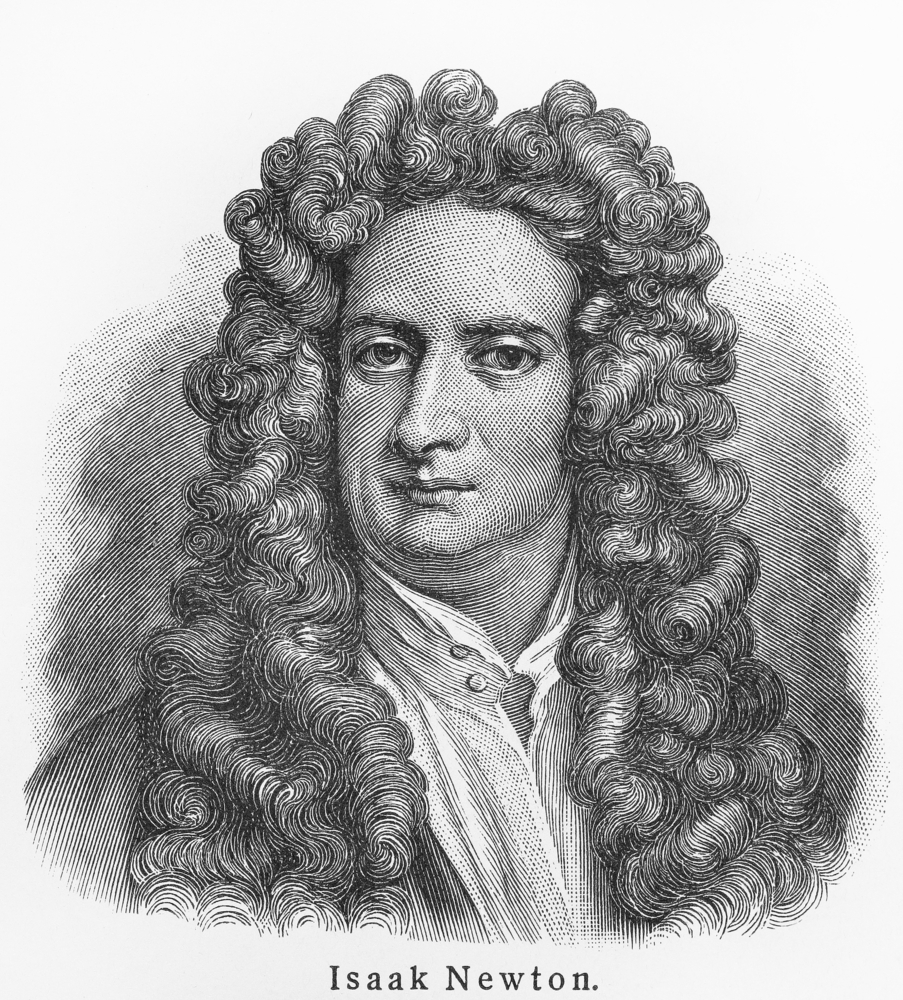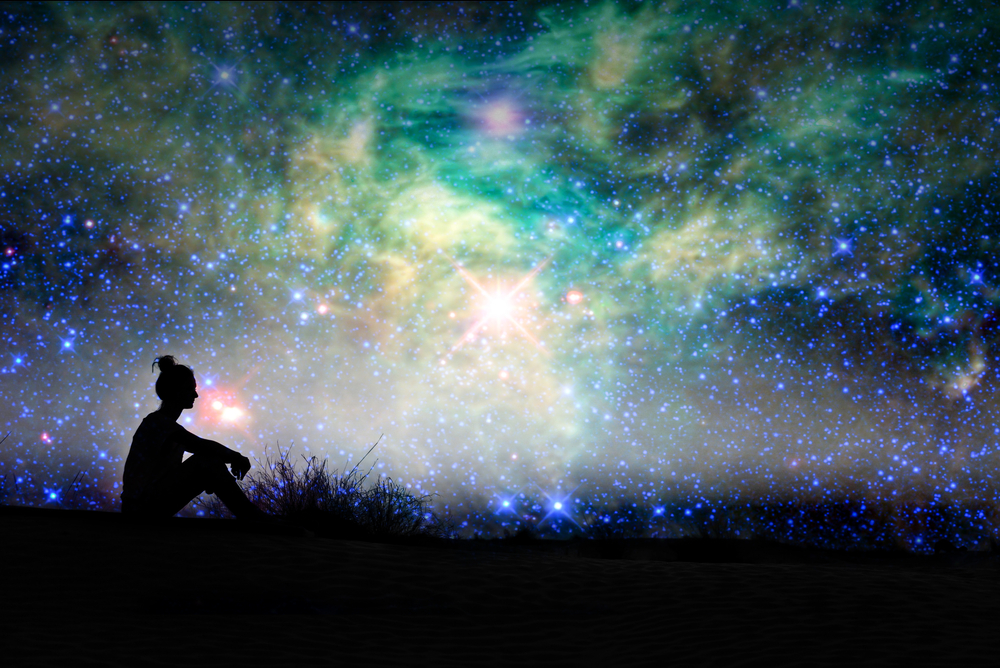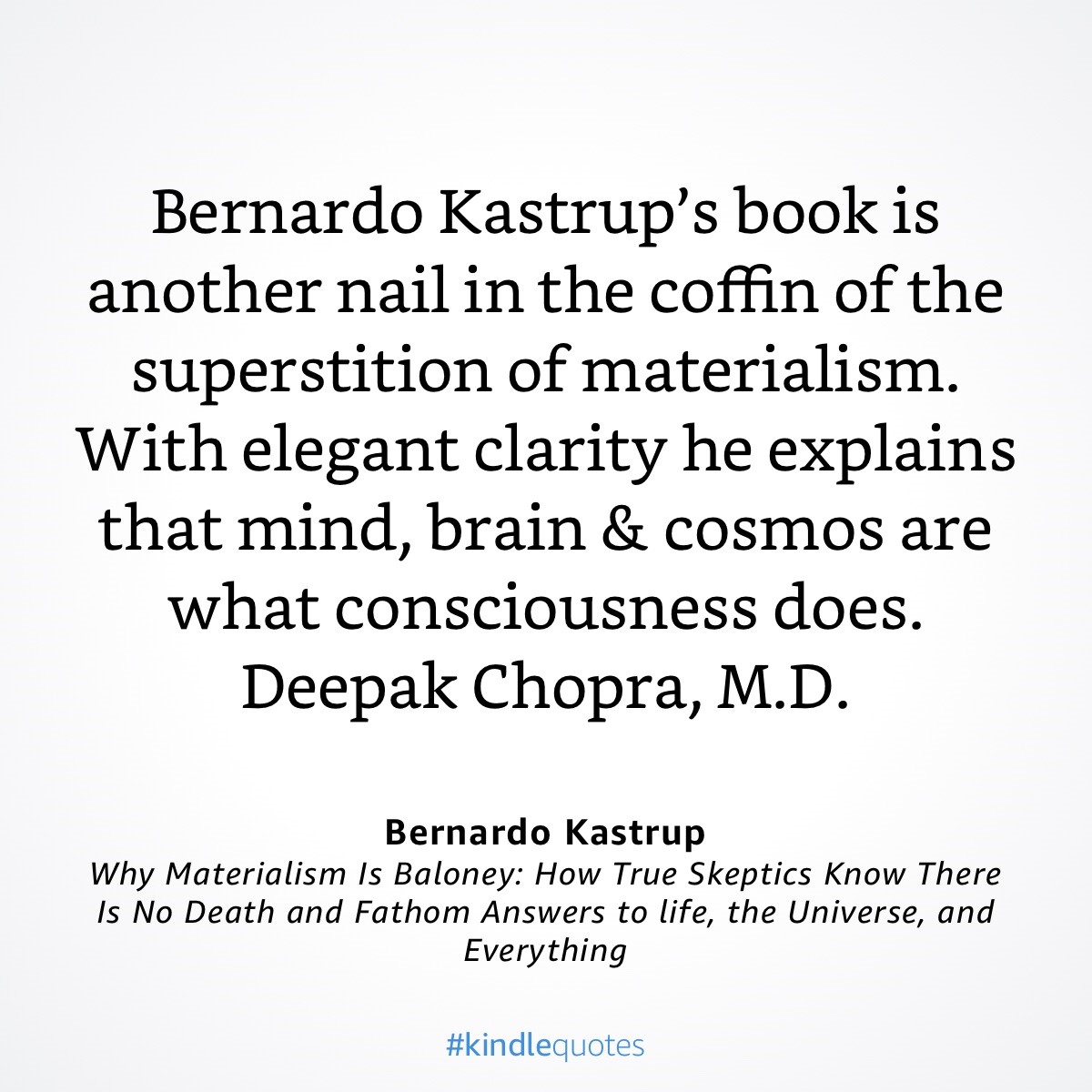The Vital Importance of Anomalies

An anomaly is a finding that’s unexpected. Anomalies occur in science, including astronomy, biology, chemistry, physics, geophysics, archeology, and psychology.
As defined in this Scientific American article, anomalies are “undeniable observations that cannot be accommodated by the reigning belief system.”
The key point here is that theories (even “scientific theories”) are belief systems, not scientific fact.
Scientific Anomalies Call for a Change in Paradigm
When enough “anomalies” — empirically undeniable observations that cannot be accommodated by the reigning belief system — accumulate over time and reach critical mass, paradigms change. We may be close to one such defining moment today, as an increasing body of evidence from quantum mechanics (QM) renders the current paradigm untenable.
– Bernardo Kastrup, Scientific American, Should Quantum Anomalies Make Us Rethink Reality?
In science, this is very important because it speaks to the fact that what a person thinks (the theory that he thinks or adheres to) may not in fact be the correct interpretation of previous research. As defined in the Scientific American article above, anomalies are “undeniable observations that cannot be accommodated by the reigning belief system.” The key point here is that theories (even “scientific theories”) are belief systems, not scientific fact.
As something that occurs outside the accepted paradigm, an anomaly is, therefore, a model-buster — evidence that the proposed theory is incomplete or inaccurate. In medicine, the words are “miracle,” “remission” and “the placebo effect.” These all point to the fact that the model being presented doesn’t account for what has actually happened and therefore the theory is incomplete or inaccurate. If professionals continue to teach such a model as wholly correct, they’re passing on something that is incorrect since it does not account for the anomaly.
It may help to remind ourselves that a model is, by definition, a representation of something else… a simplified way to explain how something works. Even in science and medicine, a model isn’t the thing; it’s a way to explain the thing. The purpose of scientific research is to test a hypothesis about how something works. Based on the outcome, theories are proposed. A theory is another name for model. It’s a proposal that endeavors to explain how the thing likely works.
If and when new evidence is found that contradicts the model, the model needs to be set aside and efforts realigned not toward doubling-down on the model but toward understanding what is actually happening since the model isn’t explaining it. If one cannot yet envision a model that would account for all the evidence, then the task is to ask questions and test hypotheses while awaiting the lightbulb moment that ties everything together into a model that can then be tested.
The quote below points to the failure of mainstream science to set aside theories that are no longer defensible (presumably because research has been funded by corporations). There has often been a dismissive attitude about not only personal experience, but about evidence which they or the establishment can’t explain, even when obtained in controlled environments.
To some extent, all languages have a built-in hidden ideology, washing people’s brains in a way that they don’t notice. Materialism — that is, the belief that only matter is real — is a brainwash of our language that tells us that only materialism is a reasonable way to look at the world… Niels Bohr, for example… brushed aside the strange aspects of the quantum world by claiming that they had nothing to say about what reality really is. It is wrong to believe, he argued, that our experience of the world can tell us what the world is like… If your observations don’t make any sense, just forget about them.
– Lothar Schäferm, Science & Nonduality
Kastrup concludes:
New Paradigm Needed, One That Accommodates the Fact that We are Creating Our Reality
The tension between the anomalies and the current paradigm can only be tolerated by ignoring the anomalies. This has been possible so far because the anomalies are only observed in laboratories. Yet we know that they are there, for their existence has been confirmed beyond reasonable doubt. Therefore, when we believe that we see objects and events outside and independent of mind, we are wrong in at least some essential sense. A new paradigm is needed to accommodate and make sense of the anomalies; one wherein mind itself is understood to be the essence—cognitively but also physically—of what we perceive when we look at the world around ourselves.
– Bernardo Kastrup, Scientific American, Should Quantum Anomalies Make Us Rethink Reality?
Dogmas & Consensus Science

Dogma
“Dogma” is defined as “a specific tenet or doctrine authoritatively laid down… proclaimed as unquestionably true by a particular group.” (source)
The article, The 10 Dogmas of Science, offers a succinct summary of assumptions and opinions which are not facts but instead have been presumed and passed off as science. In fact, virtually all of these dogmas have been soundly proven to be incorrect.
The following video also covers this subject.

Some examples of scientific dogmas that been proven to be incorrect:
- The assumption that Nature is mechanical, or machine-like.
- Matter is unconscious. The Universe, Nature, our bodies, are all made of unconscious matter. For some strange reason our brains became conscious, and that is a major problem for materialist science.
- [Genetics determine our biological fate.]
- Your mind is inside your head, it is only an aspect of the electrical activity of the brain.
- All psychic phenomena is illusory. It appears to exist, but it doesn’t. The mind is inside the head and cannot have any effect on the outside world.
- Mechanistic medicine is the only kind that truly works. Alternative and complementary therapies [only] appear to work.
Consensus Science vs Real Science
Consensus or establishment “science” refers to the solidarity of establishment forces such as corporations, universities and governments that disregard or suppress independent science until forced to accept it.
The most important quality common to all these researchers was a simple willingness to suspend disbelief and remain open to true discovery, even if it meant challenging the existing order of things, alienating colleagues or opening themselves up to censure and professional ruin. To be a revolutionary in science today is to flirt with professional suicide. Much as the field purports to encourage experimental freedom, the entire structure of science, with its highly competitive grant system, coupled with the publishing and peer review system, largely depends upon individuals conforming to the accepted scientific world view. The system tends to encourage professionals to carry out experimentation whose purpose is primarily to confirm the existing view of things, or to further develop technology for industry, rather than to serve up true innovation.
– Lynne McTaggart, The Field: The Quest for the Secret Force of the Universe
By examining dogmas and anomalies, real science vs consensus “science” becomes clear.
Science is a Process for Gaining Understanding, Not a Fixed Set of Rules for All Time
It is time to relegate Newton and Descartes to their proper places, as prophets of a historical view that has now been surpassed. Science can only be a process of understanding our world and ourselves, rather than a fixed set of rules for all time, and with the ushering in of the new, the old must often be discarded.
– Lynne McTaggart, The Field
We are more likely to dismantle the incorrect materialist paradigm if we understand the history of how, through consensus science, it became embedded in collective belief systems.
Establishment Physicists vs. Quantum Theory
In 2019… physicist Sean Carroll wrote, “Few modern physics departments have researchers working to understand the foundations of quantum theory. On the contrary, students who demonstrate an interest in the topic are gently but firmly – maybe not so gently – steered away, sometimes with an admonishment to “Shut up and calculate!” Why would physicists not want to understand science’s most successful theory and furthermore, why would they discourage their students from trying? … In 1931, the father of quantum mechanics, Max Planck, spoke about one of the major controversies at the foundation of the then evolving quantum theory when he said, “I regard consciousness as fundamental. I regard matter as derivative from consciousness.” That was construed as a ‘mystical’ worldview by the physics establishment, and because it was deemed mystical, they discouraged their students from investigating or adopting it. Does current quantum theory agree with that statement? It turns out that many physicists would not argue with it, and even more would prefer to ignore it and sweep it under the rug.
– Alan J Steinberg MD, Psychology Today, Why Physicists Don’t Want to Understand Quantum Mechanics
“The Brainwash of Our Language” Makes Us Believe that Only Matter is Real
There is something in us that leads us to expect, without even thinking about it, that only material things are real; that things, to be real, must be made of stuff — matter — to be of significance. I think that our language has a lot to do with this attitude… To some extent, all languages have a built-in hidden ideology, washing people’s brains in a way that they don’t notice. Materialism — that is, the belief that only matter is real — is a brainwash of our language that tells us that only materialism is a reasonable way to look at the world. Thus, it is possible to think that Newton’s physics and Darwin’s biology, two of the most powerful formulations of materialism of our history, weren’t inspired by the facts of nature, but by the language of their authors. So if you find it annoying that some esoteric branch of physics — quantum physics — wants you to believe that images or mathematical forms aren’t irrelevant, even though they are without substance, then consider how your language influences your attitude.
– Science & Nonduality
Astronaut Edward Mitchell (and So Many Others) Questioned the Mainstream
But what bothered [astronaut] Edward Mitchell most about the experience he had in outer space was the current scientific explanation for biology and particularly consciousness, which now seemed impossibly reductive. Despite what he’d learned in quantum physics about the nature of the universe, during his years at MIT, it seemed that biology remained mired in a 400-year-old view of the world. The current biological model still seemed to be based on a classical Newtonian view of matter and energy, of solid, separate bodies moving predictably in empty space, and a Cartesian view of the body as separate from the soul, or mind. Nothing in this model could accurately reflect the true complexity of a human being, its relation to its world or, most particularly, its consciousness; human beings and their parts were still treated, for all intents and purposes, as machinery. Most biological explanations of the great mysteries of living things attempt to understand the whole by breaking it down into ever more microscopic parts. Bodies supposedly take the shape they do because of genetic imprinting, protein synthesis and blind mutation. Consciousness resided, according to the neuroscientists of the day, in the cerebral cortex–the result of a simple mix between chemicals and brain cells… In his own work on quantum physics at MIT, Ed Mitchell had learned that at the subatomic level, the Newtonian, or classical, view–that everything works in a comfortably predictable manner–had long been replaced by messier and indeterminate quantum theories, which suggest that the universe and the way it works are not quite as tidy as scientists used to think.
– Lynne McTaggart, The Field: The Quest for the Secret Force of the Universe
Material or Classical Physics

Isaac Newton, born in the 17th century, was an English physicist and mathematician. He made many contributions, including the theory that white light is a composite of all colors of the spectrum. He wrote a “momentous book on physics” and co-developed calculus theories. He is particularly well known for his descriptions of the laws of motion and gravitation (associated with the famous story of his stroke of insight from seeing an apple fall from a tree).
“Newtonian Physics” and “Classical Mechanics,” are phrases sometimes used to describe mechanical events (those which involve forces acting on matter) using the laws of motion and gravitation. “Several ideas developed by later scientists, especially the concept of energy, which was not defined scientifically until the late 1700s, are also part of the physics now termed Newtonian.” (source)
Classical or material physics — although powerful — only applies in some cases. It is not a complete description of how the universe works — as shown, for instance, by Einstein’s theory of relativity.
“Classical physics has been very successful at understanding the physical nature of the universe, yet this worldview assumes that reality is limited to matter. This leaves classical physics ill-equipped to measure or quantify non-physical phenomena.” (Jacob Devaney)
Einstein Overturned Newton’s Concept of the Universe
Isaac Newton’s universal principles of gravity found no parallels in science at the time. Of course, Newton was proven wrong on some of his key assumptions. In the 20th century, Albert Einstein would overturn Newton’s concept of the universe, stating that space, distance and motion were not absolute but relative, and that the universe was more fantastic than Newton had ever conceived.
– Biography.com
Newtonian Physics is Less Accurate but is Mathematically Simple
Scientists have known since the early twentieth century that [Newtonian physics] is a less accurate description of the physical world than relativity theory and quantum physics… Since Newtonian physics is… mathematically simple, it remains the standard for calculating the motions of almost all objects from machine parts, fluids, and bullets to spacecraft, planets, and galaxies.
– Encyclopedia.com
The Rise of Materialism

Materialism states that everything in the universe is matter. Modern science aligns with yoga and other indigenous teachings to reveal the illusion of the materialist paradigm.
The Western mind views the table and chair as more real than the invisible realms. The invisible makes up 99% of existence and includes frequencies and consciousness, including what we know as thought and emotion, plus light and sound vibrations that are outside the humans’ sensory range of perception. What we perceive through our five senses is not the full story. Every human is invited to expand beyond the limits of their five-senses “reality” to experience and create from the limitless expanse of the force from which matter arises — also called consciousness.
When Nature Was No Longer Believed to Be Alive
Up until the Cartesian revolution of the Seventeenth Century the general belief taught in the universities of Europe was that Nature was alive – the Earth is alive, animals and plants are alive. They all have souls bestowed upon them by the Breath of God… But the crux of the Seventeenth Century revolution was that it said: no, this is not a living world. It is a dead world, made up of unconscious machinery, not conscious organisms. In the Nineteenth Century this Cartesian dualism* devolved into full-blown materialism where matter was made the only reality, and Spirit confined to the imagination. What is not material therefore doesn’t exist… The human mind becomes nothing but the… activity of the brain. The uncomfortable consequence of this materialistic assumption is that, with matter being unconscious, we should not be conscious ourselves. It is considered an epiphenomenon, like a shadow of the brain’s processes, just an illusion.
– Elva Thompson, Waking Times, The 10 Dogmas of Science
* The word “Cartesius” is the Latin form of the name Descarte. Cartesian dualism is a term referring to Descartes’ belief in the distinction between mind and body. (source)
Materialism as a Philosophy
Materialism states that everything in the universe is matter, without any true spiritual or intellectual existence. Materialism can also refer to a doctrine that material success and progress are the highest values in life. This doctrine appears to be prevalent in western society today… Materialism as a philosophy is held by those who maintain that existence is explainable solely in material terms, with no accounting of spirit or consciousness. Individuals who hold to this belief see the universe as a huge device held together by pieces of matter functioning in subjection to naturalistic laws. Since materialism denies all concepts of Special Creation, it relies on the Theory of Evolution to explain itself, making beliefs in materialism and evolution interdependent.
– All About Philosophy
The Yoga Philosophy Perspective
Often translated as “the illusory nature of the world,” “maya” actually means “made of matter.” … Within maya, as forms begin to manifest from the potential state into their actual unfolded form within the time-space continuum, objects start to take shape and structure. They have limits and boundaries. Events start to unfold in time. Attachments are formed between things. Within the plane of maya, everything is always moving and changing.
– Alan Finger
Materialism Doesn’t Hold Up to Scientific Investigation
Scientific materialism posits that the physical universe exists independently of consciousness, and that minds emerge through an accidental process of physical and biological evolution. Materialism — or physicalism — has been the dominant ideology of the last two centuries, pervasively inflecting every aspect of our society… Bernardo Kastrup writes, “unlike what one would expect if the world were separate or distinct from mind, the observed properties of the world indeed cannot be said to exist prior to being observed.”
– Daniel Pinchbeck, The Pulse, The Best News of Our Time: Materialism Is A Busted Philosophy
The Aether & 20th Century Establishment Science
A key assumption that helped to support the materialist paradigm was that the aether doesn’t exist.
Current scientific theories advocating the existence of “dark matter,” “dark energy,” “zero point energy” and “energy from the vacuum” have dragged unwilling Western researchers to the recognition of an undetected energy that exists throughout the universe. While these same scientists deplore terms like “aether,” they’ll often freely use a term like “quantum field,” which is really just another word for the aether.
– Eric Thompson, Subtle Energy Sciences
For a succinct definition and discussion of aether, see QM Introduction & Terminology – The Importance of Aether.
Introduction
Here we review the history around humanity’s understanding of aether, the unified field that connects all things. Beginning in the late 1800s, Western science disregarded wisdom that had survived many thousands of years. Obstinately defending their science with religious fervor for more than 100 years, the specific experimental finding they touted was, in fact, never accepted by the greatest 20th century scientists, and has been proved wrong many times.
In their naivety and hubris, mainstream Western scientists of the 20th century shattered a legacy of inspiration and empowerment and left their own legacy in its place — one of self-destruction. We explore how this happened, and how our awareness and embodiment of experiential truths (shared by both indigenous wisdom keepers and modern scientists) can right this wrong and prevent ignorance from having such power in the future.
Of Vital Impact: Humanity’s Awareness of Its Connection to All
Our understanding (and our disbelief) of aether, the unified field that connects all things, has had a tremendous impact on how humanity has conducted itself. For thousands of years, wisdom keepers have been teaching about this very thing (called Indra’s Net and Grandmother Spider’s web among other names) and the implications for our relationships with the planet and each other.
Modern science now confirms and builds on the ancient narratives. But if we skip over the history of how we got here, we won’t understand how power structures force-fed an incorrect and deeply harmful worldview to multiple generations, putting us on a path to self-destruction. By being informed, we’ll be prepared to prevent such ignorance from being institutionalized in the future.
For thousands of years, the Aether (ether, æther, aither), a field which connects and permeates all things, was an essential facet of both the philosophy and science of reality in cultures around the world.
– Adam Apollo, Resonance Institute
The Faulty Experiment That Changed the Legacy of Generations
Despite a prior universal belief in the existence of ether, the famous Michelson and Morley experiment of 1887 failed to detect “ether currents” which seemed to imply that aether doesn’t exist, and so scientists concluded just that.
Gregg Braden writes, “While the experiment may be described as a ‘failure’ with regard to proving the existence of ether, it actually demonstrated that the ether field just might not behave in the way scientists originally expected. Just because no movement was detected doesn’t mean that ether wasn’t there. An analogy for this would be to hold your finger above your head to test for wind. To conclude that no air existed because you felt no breeze during the test would be a rough equivalent of the thinking behind the conclusions of the 1887 experiment.”
But the new belief (or, actually, the disbelief) caught like wildfire. And for more than 100 years it has persisted — not because of an increasing amount of evidence to support it. Quite the contrary. This lengthy period of disbelief wasn’t due to supporting evidence nor was it due to a dearth of visionaries offering other points of view. It lived on, overpowering the wisdom of the ages, due to its association with a new power structure. Western establishment “authorities” pushed this belief with arrogant conviction, teaching the Michelson-Morley conclusion as fact in college science curriculums the world over. Scientists who brought forth contrasting theories were disparaged as propagating “pseudoscience” and “hogwash.”
For most of the 20th century, if scientists dared to mention anything about a unifying field of energy that connects everything through what is otherwise empty space, they would be laughed out of the classroom or right off the university stage. With few exceptions, the idea wasn’t one that was accepted, or even allowed, in serious scientific discussions.
– Gregg Braden, The Divine Matrix (2007)
It’s stunning to note that mainstream sources throughout the 20th century considered the case closed on ether, even though some of the greatest scientists of all time disagreed with the conclusion of the Michelson-Morley experiment, including Nobel Prize winning physicist Hendrik Lorentz, Nobel Prize winner Albert Einstein, the famous physicist known for the De Broglie-Bohm theory, David Bohm. and quantum mechanics founder, Max Planck among others.
At the time that Einstein was formulating equations on relativity between 1905 and 1916, the Michelson-Morley conclusion was a major influence, and he created his theory of relativity without aether being a necessary component. But in 1924, Einstein wrote a paper called Concerning the Aether in which he reaffirmed his belief in the existence of aether.
Trickles of a Paradigm Shift
In 1986, the journal Nature published a report called “Special Relativity” to describe an experiment by scientist E.W. Silvertooth that overturned the Michelson-Morley conclusion.
Duplicating the 1887 experiment — but with equipment that was much more sensitive — Silvertooth reported that he did detect a movement in the ether field. Furthermore, it was precisely linked to the motion of the earth through space, just as had been predicted! This experiment, and others since then, suggest that the ether does in fact exist, just as Planck suggested in 1944.
– Gregg Braden, The Divine Matrix (2007)
This 1986 report, and a cascade of later science experiments were of major, major, major importance. However, conducting an internet search in 2023 on these experiments, we could easily have gotten the impression they never happened and that instead, the Michelson-Morley conclusion stands. The algorithm spit out articles that describe the 1887 experiment in painstaking detail, parroting the “news” of its failure to show the existence of ether — as in this BYJU’s Learning page, this Brittannica page and this ThoughtCo article which goes so far as to conclude: “It would take nearly 20 years to really get over the conceptual hurdles needed to abandon the ether model entirely and adopt the current model.” It’s spectacular how wrong this is. The “ether model” has most definitely not been abandoned; and since 1986, it’s been shown time and time again to be an accurate model of the Universe.
The Effect of Maintaining An Outdated Status Quo
There is overwhelming evidence of the existence of a field (called by many names) from which all matter arises and that connects us all.
Over a century ago, an experiment which attempted to prove the existence of the aether failed. Rather than admit to faulty assumptions, the scientists of the day declared that the aether must not exist. This conclusion ran counter to common sense. After all, if ocean waves travel through water and sound waves travel through air, then light waves must travel through something… Meanwhile, the aether was replaced by a new name for the fabric of space: Spacetime…Today, the aether is back. Under a new name, of course. Today, it’s called the Higgs Field, and its existence has been proven using no less than the high-energy particle accelerator at CERN. Naturally, as a promoter of truth, Professor Higgs (now retired) was shunned and scorned for decades before his theory was proven by the persistence of some other brave souls. So, what do we call this field, this fabric of space? The aether again? The Higgs Field? Personally, I prefer using Lynne McTaggart’s 2003 book title, which inquires into its nature and simply calls it The Field… The Field is a subtle, fluid, magnetic energy which fills all space.
– Owen Waters, Higher Energies: The Ether & Etheric Energy
The problem isn’t so much the failure of the researchers in 1887 to understand what their experiment did and did not prove, but the hubris with which western establishment academics appointed themselves the authority on truth and ridiculed anyone who offered anomalies, hypotheses and science that didn’t fit their belief system.
Even more important are the outcomes of propagating this belief system. Without knowledge of the field that connects all things (across any and all distances), scientists believed that things happen independently of each other, that what one person does in one part of the world has no effect on others.
They pressed this deadly serious belief system onto the world, with repercussions that Gregg Braden spells out: “As a consequence of this kind of thinking, we govern our nations, power our cities, test our atomic bombs, and exhaust our resources believing that what we’re doing in one place has no impact anywhere else. Since 1887, we’ve based the development of an entire civilization on the belief that everything is separate from everything else, a premise that more recent experiments show is simply not true!”
One of the many other outcomes of this belief system was widespread disdain among “scientists” for anything to do with energy and the subtle body — a natural subject of wisdom teachings since we are all connected by an energetic field. Again, their ignorance could simply have been their loss but the power these establishment systems held led to entire generations of people being cut off from vital healing knowledge.
Will You Commit to Righting this Wrong?
We are each capable of restoring the wisdom of our ancestors to its rightful place.
The power of Western establishment “authorities” to push their agenda — no matter how incorrect their understanding — has been so enormous as to shape an entire culture. And since Western culture has been spread throughout the world, it’s responsible for having set the human race on a self-destructive path, and for holding us back from making sound and humane decisions these past 125 years.
I hope you agree that it’s time to right that wrong, and to prevent establishment power from causing such widespread harm in the future. This is something we can each do.
After understanding the history of how we got here, each of us can investigate and embody the real truths, the ones that indigenous wisdom keepers have taught for thousands of years as Indra’s Net and Grandmother Spider’s web, and that modern science has confirmed:
– Gregg Braden, The Divine Matrix 2007
- Discovery 1: There is a field of energy that connects all of creation.
- Discovery 2: This field plays the role of a container, a bridge, and a mirror for the beliefs within us.
- Discovery 3: The field is nonlocal and holographic. Every part of it is connected to every other, and each piece mirrors the whole on a smaller scale.
- Discovery 4: We communicate with the field through the language of emotion.
A Choice with Devastating Consequences

A Focus on the World as Machine & Dominance Over Nature
With a few deft moves, Newton and Descartes had plucked God and life from the world of matter, and us and our consciousness from the center of our world. They ripped the heart and soul out of the universe, leaving in its wake a lifeless collection of interlocking parts… With the work of Charles Darwin… you are no more than an evolutionary accident… Life is not about sharing and interdependence. Life is about winning, getting there first. And if you do manage to survive, you are on your own at the top of the evolutionary tree. These paradigms — the world as machine, man as survival machine — have led to a technological mastery of the universe, but little real knowledge of any central importance to us… how we think, how life begins, why we get ill, how a single cell turns into a fully formed person, and even what happens to human consciousness when we die.
– Lynne McTaggart, The Field
The film, “Avatar: The Way of Water” beautifully illustrates the different worldviews. The powerful visual experience offered by this movie helps us to more fully understand the implications of different perspectives. The film helps us to experience and feel the presumptions and actions of a materialist belief system vs those with an awareness and honor for the sea of consciousness of which we are a part.
Tesla Tried to Awaken Science to Look Beyond Physical Matter
The day science begins to study non-physical phenomena, it will make more progress in one decade than in all the previous centuries of its existence.
– Nikola Tesla
We can consider that Tesla was pointing to things far greater than at first it may appear. As we elevate in consciousness, we come to realize that the materialist mind is severely limited in many consequential ways. It simply can’t fathom the nature of reality and therefore, the truth of who we are.
They Took Away Consciousness, Too

Why do you insist the universe is not a conscious intelligence, when it gives birth to conscious intelligences?
– Roman philosopher, Cicero, 44 BCE
Epiphenomenalism is a theory that:
- Mental events are caused by the brain.
- Consciousness is a byproduct of physiological processes.
- Mental events have no effect upon physical events. (Stanford Encyclopedia of Philosophy)
Random Laws of Chance Don’t Address Consciousness
We are told that our universe all began with a sudden explosion — a big bang — about 13.8 billion years ago. Dr. Lanza writes:
“In this model, the universe was presented as a kind of self-operating machine. It was composed of stupid stuff, meaning atoms of hydrogen and other elements that had no innate intelligence. Nor did any sort of external intelligence rule. Rather, unseen forces such as gravity and electromagnetism, acting according to the random laws of chance, produced everything we observe… As for how consciousness could arise in the first place, no one even has guesses. We cannot fathom how lumps of carbon, drops of water, or atoms of insensate hydrogen ever came together and acquired a sense of smell. The issue is apparently too baffling to raise at all.”
– CBC Radio
Scientists Not Ready to Believe the Universe That Has Created Conscious Intelligence is Consciously Intelligent
While modern physics and cosmology look more metaphysical today than ever before, we still have reductionism among scientists. They are in denial and are not ready to believe that the entity (this Universe) that has created conscious intelligence like us is, consciously intelligent.
– Dr. Lamba’s Awakening Call
Fragmentation & Reductionism vs the Whole

Fragmentation is a Way to Study, Not a Description of the World as It Is
In some ways it is natural for humans to divide things up and separate them to make their interactions with the world and other people manageable. But this has “ultimately led to a wide range of negative and destructive results, because man lost awareness of what he was doing and thus extended the process of division beyond the limits within which it works properly. In essence, the process of division is a way of thinking about things that is convenient… But problems arise when we take “the content of our thought for a ‘description of the world as it is.” (pg. 3) This is a very important point for Bohm which bears some deeper exploration.
He notes that “in scientific research, a great deal of our thinking is in terms of theories… A theory is primarily a form of insight, i.e., a way of looking at the world, and not a form of knowledge of how the world is” (pg. 4)… Contemporary research in neuroscience confirms [the] view that our prior knowledge shapes our current experience and not that we are perceiving objective reality.
Fragmentation is not reality, Bohm insists. “Rather, what should be said is that wholeness is what is real.
– Wise Insights Forum, ‘Wholeness and the Implicate Order’ by David Bohm
Focusing only on Reductionism (Breaking Things Apart) Eventually Kills What It’s Trying to Understand
The view held that in order to understand life, one must focus on what is believed to be the indivisible and elementary vital units of the cell, taking an epistemiological decompositional and/or bottom up approach to understanding more complex processes. One of the great ironies of this reductionistic approach is that it necessitated the violent breaking apart of the object of study into smaller and smaller visible subunits (e.g. vivisectionism), effectively killing (and greatly distorting the image of) the very thing it sought to understand, much like a young child may pull off the wings of a butterfly in order to satisfy his curiosity.
– Sayer Ji
Materialism Was Never the Right Answer

The mechanistic model that has fragmented our understanding is no longer a viable paradigm.
The Materialist Paradigm in a Nutshell
Many modern scientists believe that life evolved accidentally, that human beings are nothing more than gene machines, that everything we think or feel is just the buzzing around of our brain cells and that there is no ‘soul’ or ‘spirit’ inside us which will survive the death of the body. This is the ‘enlightened’ view of the world that science has given us.
– Steve Taylor, Waking from Sleep
The Materialist Worldview Left Many Things Unexplainable
On his way back to Earth after his pioneering moonwalk, Apollo 14 astronaut… Dr. Edgar Mitchell had the profound experience of feeling interconnected to everything he was observing from the window of his space capsule: the stars, the moon, our blue planet, and the vastness of the cosmos. He realized quickly that in order to explain such an extraordinary experience (and others like it), there would need to be a rapprochement between the scientific and spiritual interpretations of reality. As a scientist and visionary, Dr. Mitchell saw a need to reconcile his training as an engineer and astrophysicist with the wisdom of the ages to transcend the limitations of what he saw as an outdated materialist worldview. A new framework would be needed: one that could help explain the unexplainable — and spark transformation. He called this framework noetic sciences.
– Institute of Noetic Sciences (IONS)
Scientific Research Struck Down The Outdated View
The findings of my research and contemporary consciousness research in general… are in radical conflict with the most fundamental assumptions of materialistic science concerning consciousness, human nature, and the nature of reality. They clearly indicate that consciousness is not a product of the brain, but a primary principle of existence, and that it plays a critical role in the creation of the phenomenal [experienced] world.
– Stanislav Grof M.D., Ph.D.
From Material to Non-Material Science
The limitations of physical science are becoming more prominent as time goes on. As people begin to recognize the findings of non-material science, and the suggestions they have about consciousness, the underlying makeup of our reality, and what that means for human possibility, a cultural shift is happening in science as a field. In the past, we have long separated spirituality and science, as if they were not relatable. But now in Western culture, people are starting to recognize the scientific nature of spiritual practice and understanding that the East has long understood. This is leading to a renaissance within scientific thought that is long overdue and heavily welcomed. As these understandings are unleashed to the general public, the effects it will have on anything from wellbeing and healthcare to energy production, will completely transform the way we live… so long as we are open to and engage with these changes.
– Joe Martino, Collective Evolution, Email Introduction to How Science Arrived at the Doorstep of Spirituality
Post-Material Science Explores Our Connection with the Entire Universe
Classical physics is ill-equipped to measure or quantify non-physical phenomena. This has led to a movement towards post-material science. If you experience intuition and other non-physical phenomena, you will be excited to learn that science is beginning to validate this realm. You will be inspired to explore the quantum ways that you are connected with the entire universe.
– Jacob Devaney, Collective Evolution, Email Introduction to How Science Arrived at the Doorstep of Spirituality
The Mechanistic Model Can No Longer Be Sustained
The mechanistic model that has fragmented and separated our understanding of reality can no longer be sustained or bring about the transformation needed to help humanity thrive. There is now enough evidence to support the underlying assumption that the physical world is connected by a subtle energy information field and that at the quantum level, we are all one. Human consciousness not only plays a role in the quantum realm of subatomic matter but it also plays out in the macroscopic world of our daily experience. This new brand of the science of consciousness ‘science within consciousness’ or Tiller Institute‘s Psychoenergetic Science is now an integral part of ‘tomorrow’s’ physics… Evidence from Princeton and other research centres around the world also show that human consciousness is a non-local energy force that can influence living and non-living systems and it can create order.
– Digitised Subtle Energy Information Fields, An Open-Source Non-Profit Initiative
- Next, see The Science
- Or, jump to What is Consciousness?



